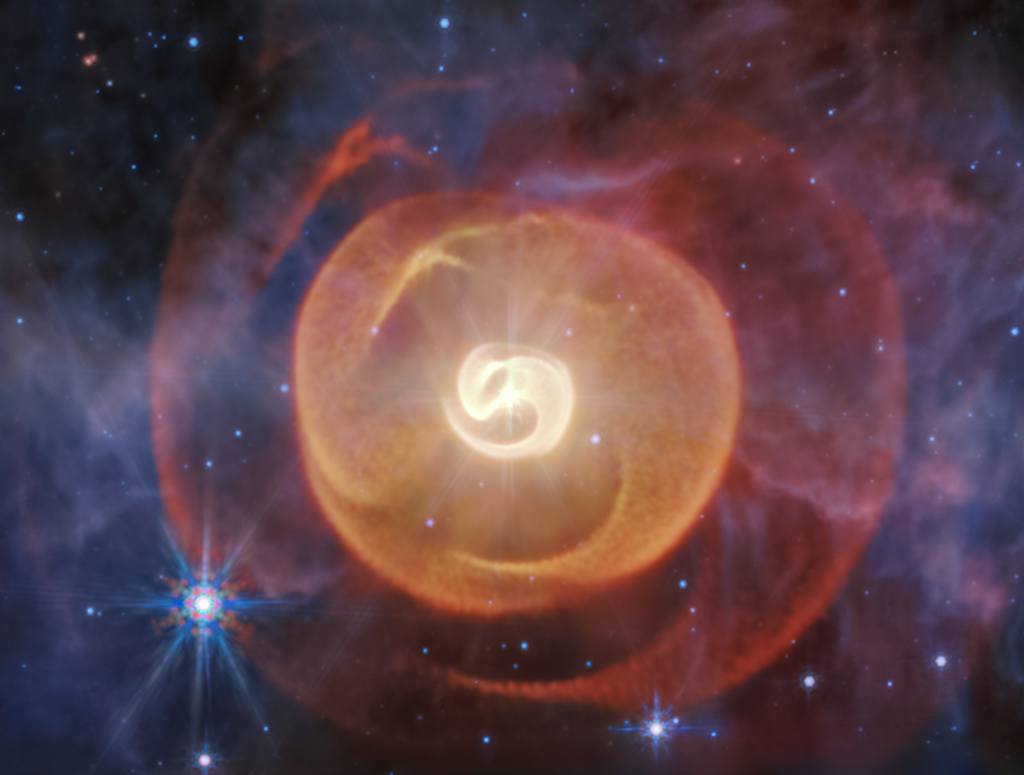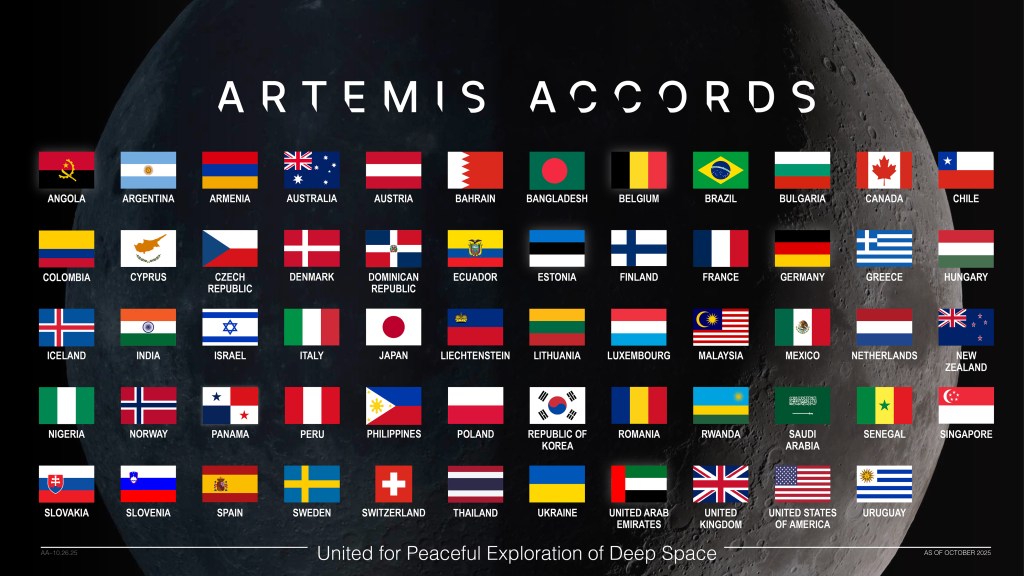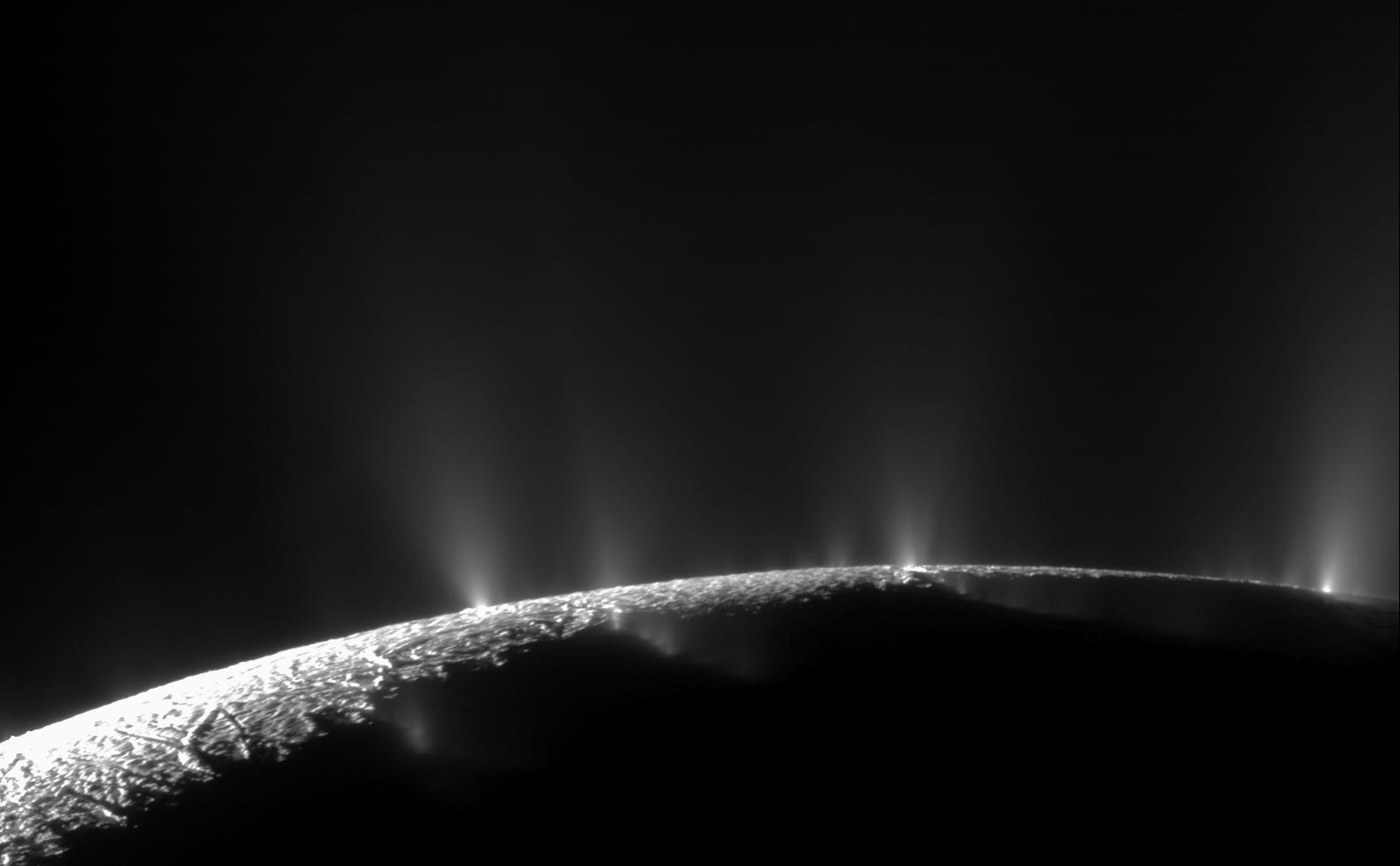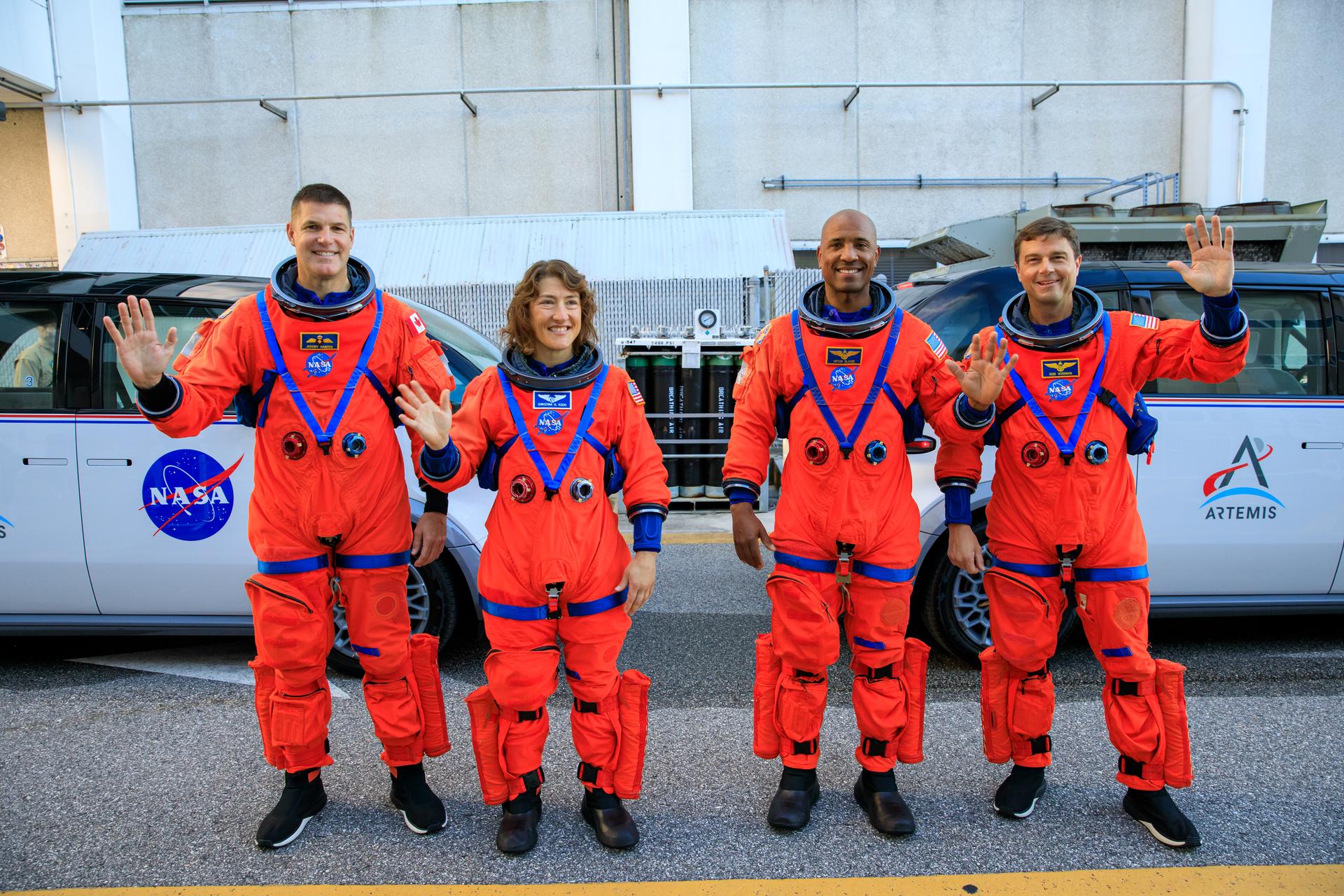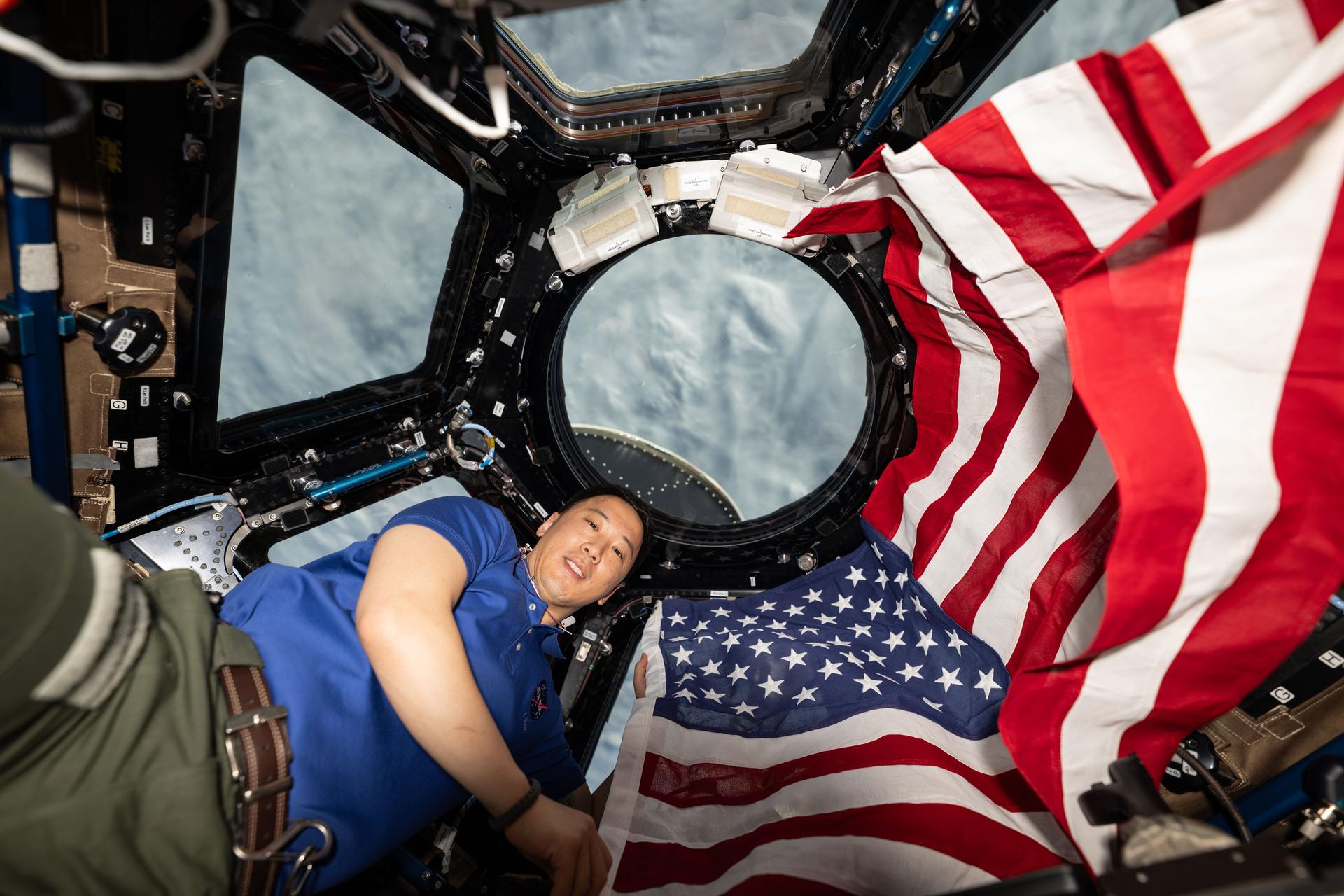1 min read
NGC 604 (MIRI Image)
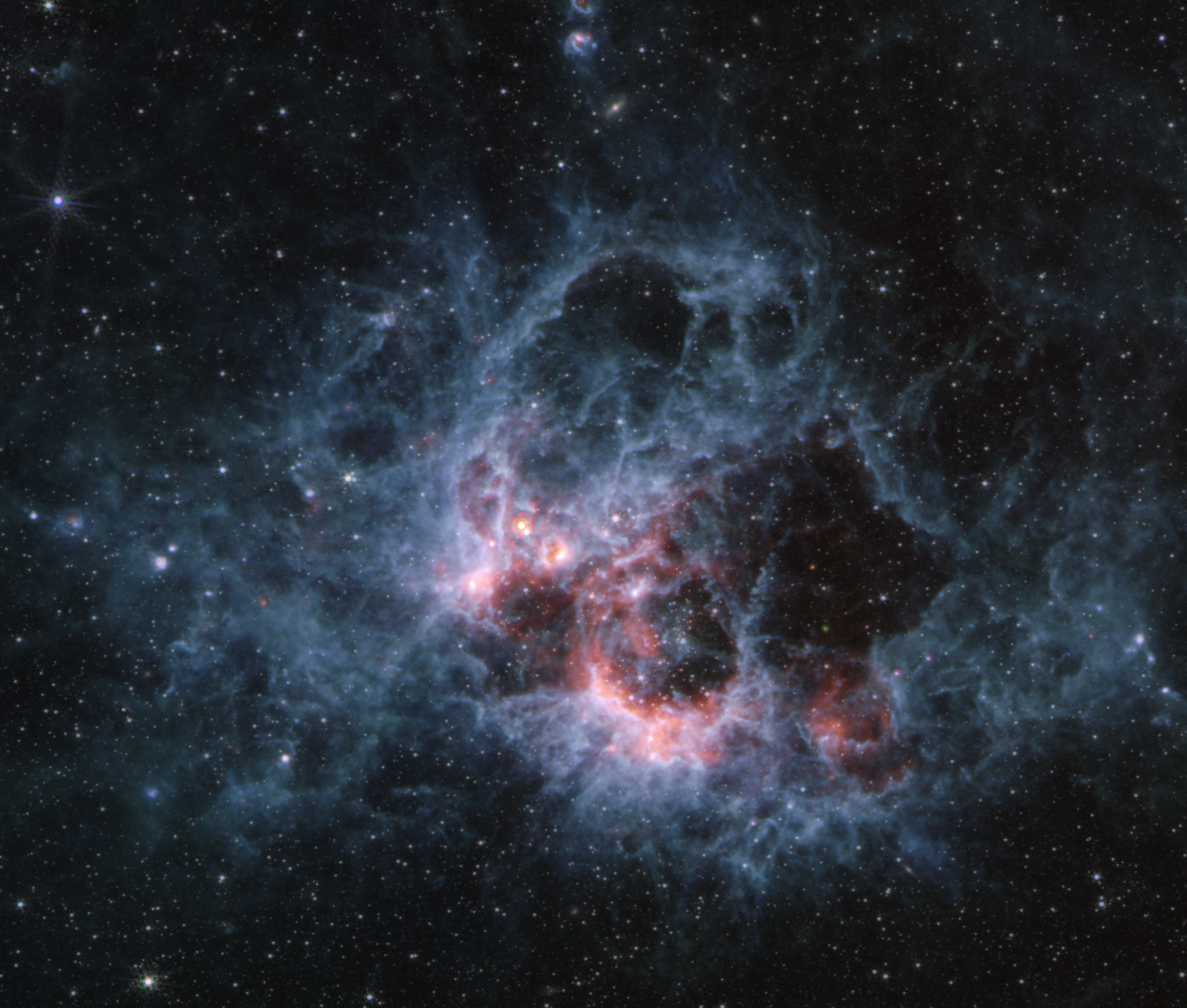
This image from NASA’s James Webb Space Telescope’s MIRI (Mid-Infrared Instrument) of star-forming region NGC 604 shows how large clouds of cooler gas and dust glow in mid-infrared wavelengths. This region is a hotbed of star formation and home to more than 200 of the hottest, most massive kinds of stars, all in the early stages of their lives.
In the MIRI view of NGC 604, there are noticeably fewer stars than Webb’s NIRCam image. This is because hot stars emit much less light at these wavelengths. Some of the stars seen in this image are red supergiants—stars that are cool but very large, hundreds of times the diameter of our Sun. The blue tendrils of material signify the presence of polycyclic aromatic hydrocarbons, or PAHs.
About the Object
- R.A. PositionR.A. PositionRight ascension – analogous to longitude – is one component of an object's position.01:34:33.79
- Dec. PositionDec. PositionDeclination – analogous to latitude – is one component of an object's position.30:46:59.0
- ConstellationConstellationOne of 88 recognized regions of the celestial sphere in which the object appears.Triangulum
- DistanceDistanceThe physical distance from Earth to the astronomical object. Distances within our solar system are usually measured in Astronomical Units (AU). Distances between stars are usually measured in light-years. Interstellar distances can also be measured in parsecs.About 2.73 million light-years (830,000 parsecs)
- DimensionsDimensionsThe physical size of the object or the apparent angle it subtends on the sky.Image is about 1.8 arcminutes across (about 1,400 light-years)
About the Data
- Data DescriptionData DescriptionProposal: A description of the observations, their scientific justification, and the links to the data available in the science archive.
Science Team: The astronomers who planned the observations and analyzed the data. "PI" refers to the Principal Investigator.This image was created with Webb data from proposal: 6555 (M. Marin). Image processing: Alyssa Pagan (STScI).
- InstrumentInstrumentThe science instrument used to produce the data.NIRCam, MIRI
- Exposure DatesExposure DatesThe date(s) that the telescope made its observations and the total exposure time.26 Janurary 2024
- FiltersFiltersThe camera filters that were used in the science observations.NIRCam> F335MMIRI> F700W, F1130W, F1500W
- Object NameObject NameA name or catalog number that astronomers use to identify an astronomical object.NGC 604, M33
- Object DescriptionObject DescriptionThe type of astronomical object.Star Forming Region in Spiral Galaxy M33
- Release DateMarch 9, 2024
- Science ReleasePeering Into the Tendrils of NGC 604 with NASA’s Webb
- CreditImage: NASA, ESA, CSA, STScI

This image is a composite of separate exposures acquired by the James Webb Space Telescope using the NIRCam instrument. Several filters were used to sample varying wavelength ranges. The color results from assigning different hues (colors) to each monochromatic (grayscale) image associated with an individual filter. In this case, the assigned colors are: Luminostiy: F335M, Blue: F700W, Green: F1130W, Red: F1500W
Related Images & Videos
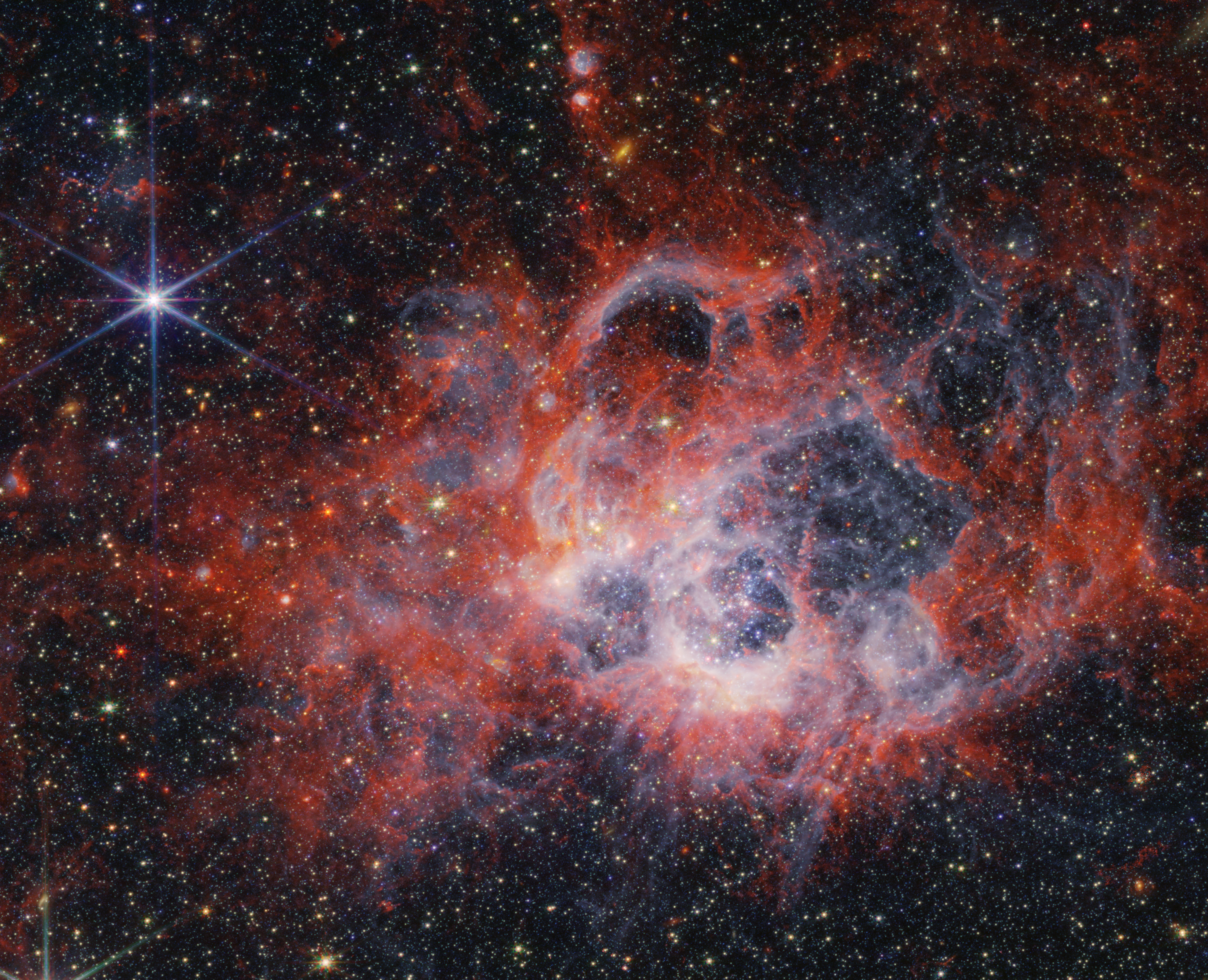
NGC 604 (NIRCam Image)
This image from NASA’s James Webb Space Telescope’s NIRCam (Near-Infrared Camera) of star-forming region NGC 604 shows how stellar winds from bright, hot young stars carve out cavities in surrounding gas and dust. The bright orange streaks in this image signify the presence of...
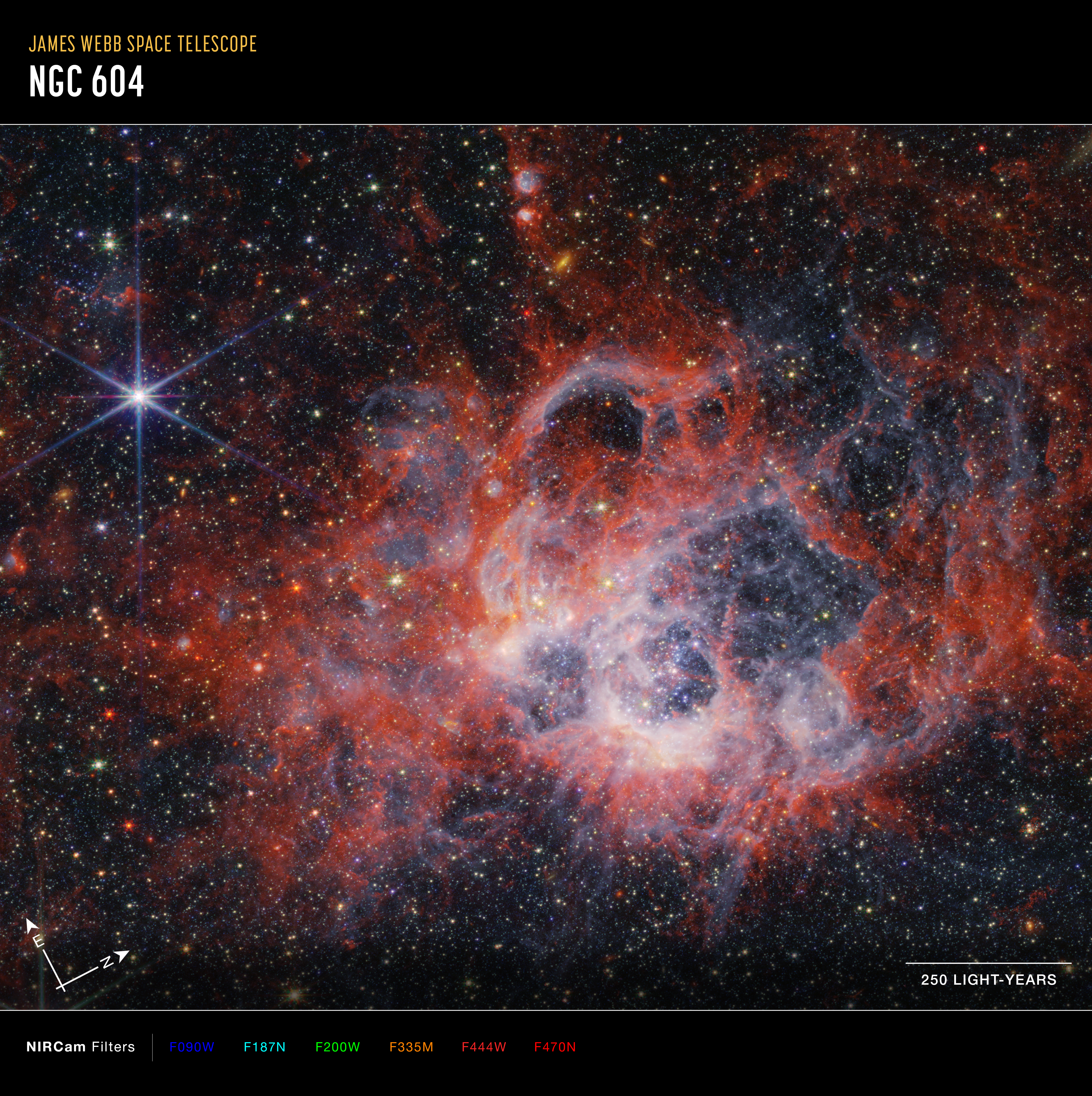
NGC 604 (NIRCam Compass Image)
This image of the NGC 604, captured by Webb’s NIRCam (Near-Infrared Camera) shows compass arrows, scale bar, and color key for reference. The north and east compass arrows show the orientation of the image on the sky. The scale bar is labeled in light-years, which is the...
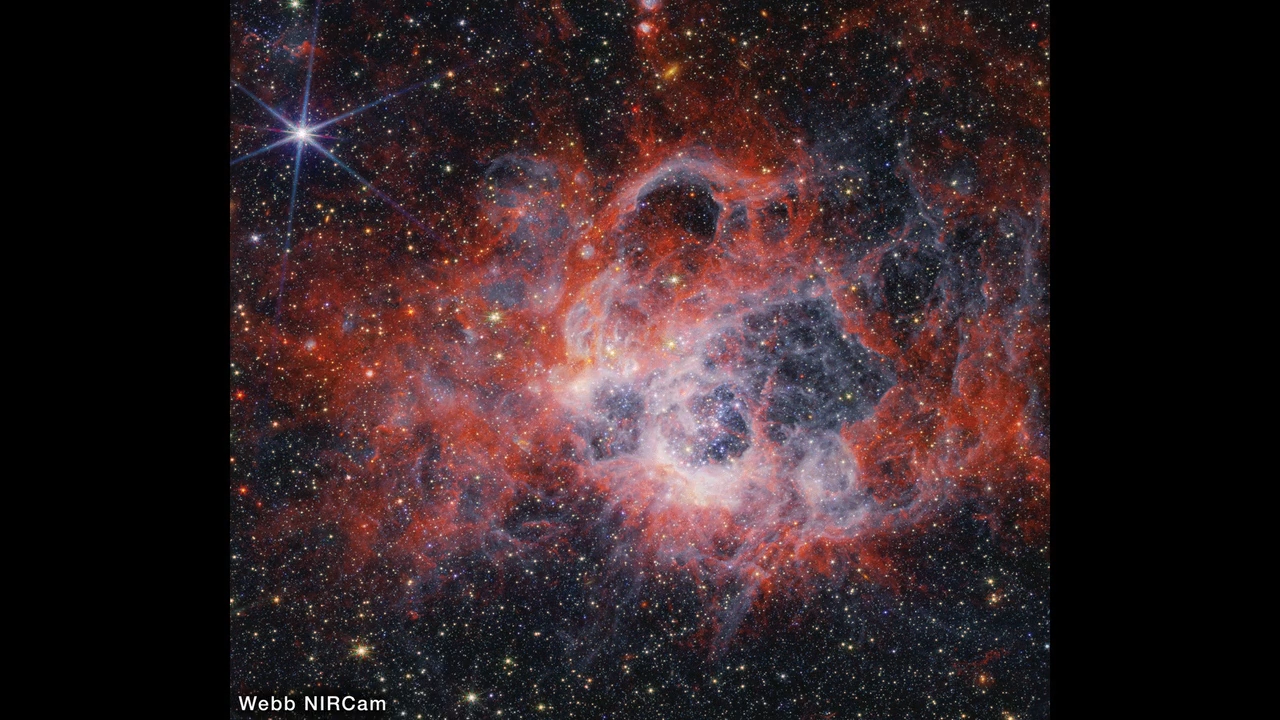
NGC 604 Hubble to Webb Fade
This video compares images of star-forming region NGC 604 taken in visible light with the Hubble Space Telescope’s WFPC2 (Wide Field and Planetary Camera 2), near-infrared with the James Webb Space Telescope’s NIRCam (Near-Infrared Camera), and mid-infrared with Webb’s MIRI...
Share
Details
Laura Betz
NASA’s Goddard Space Flight Center
Greenbelt, Maryland
laura.e.betz@nasa.gov
NASA, ESA, CSA, STScI

